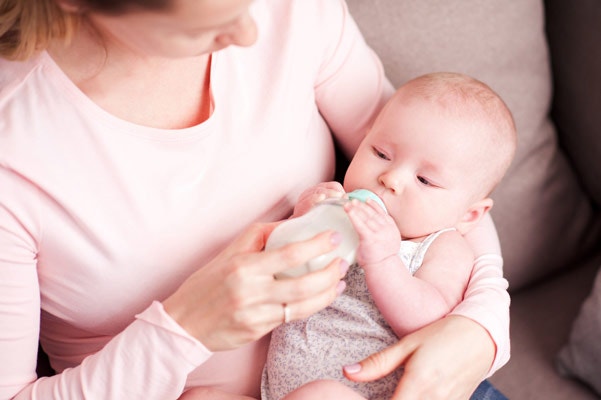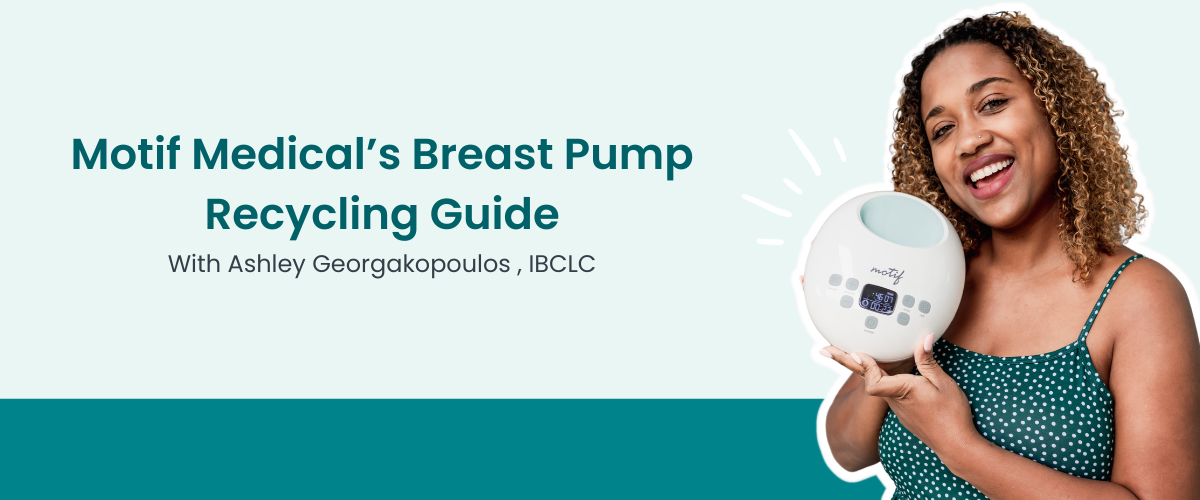How Much Should a Newborn Eat? Breastfeeding in the First Year
With a new little one, it can be hard for new parents to learn all the ins and outs of what their baby needs, especially when talking about breastfeeding, if they're getting enough milk, introducing solid foods, and how it all affects your baby's weight and development. Luckily, we're here to help break down the details of how much a newborn should eat!
Newborn: Breastfeeding In The First Days
Days 1-3 coincide with the change from colostrum to mature breast milk, which takes 3-5 days to transition to its full volume and consistency. In fact, the stomach cannot physically stretch to accommodate more than 10 ML at a time until Day 3. This means that feedings will be slow and frequent, aiming for 10-12 times in a 24 hour period. At times, it will feel like an on-going feed, due to how clustered together the feedings can and should be. This is necessary to get the required calories and stave of jaundice, low blood sugar, and fatigue. Amounts will fluctuate from half an ounce to an ounce until full volume and longer stretches occur. Luckily, colostrum and transitional milk are quite concentrated in calories.
Tip: Check diapers! Easiest way to ensure intake is to count diapers, monitor the ever growing number of wet diapers a day. By day four, there should be four or more diapers a day for breastfed babies. As for stools, they, too, change with the transition of milk! Starting with meconium, black and tarry, to dark green by day 2, and gold, mustard appearance by the time milk has transitioned completely. A lack of change or inadequacy in the bowel movements and stools can alert for issues.

Weeks 1-3 bring about another wave of cluster feedings and their first developmental leap. Depending on the number of weeks gestation the baby was born, cluster feeding week takes place somewhere in this time frame, usually lasting 5-7 days. This can look like several 10-15 minute sessions, only an hour or two apart, followed by a 2-3 hour nap to rest. If measuring with a “weighted feed” or by bottle feeding, feedings would vary from 1-2 ounces each feed.
Apart from stages for clustering, newborns feed on average every 2-3 hours. Melatonin is produced at a higher rate in the mother’s body, since infants do not make much, and so feedings will and should also take place at night. It's also crucial for supply development, as prolactin peaks between 1-5 A.M.! Frequency and timing between the mother and the breastfed baby are designed to complement each other.
How Much Should A Baby Eat in Months 1-3?
After the first month, your baby has developed a rhythm with breastfeeding. Feedings can almost always be predicted, last 15-20 minutes, and occur every 2-3 hours. The breastfeeding amount requirements will not vary much, and will usually average out to be at a rate of one once per hour, or 24 ounces a day. However ,watch for hunger cues and keep in mind that snacking and asking to feed following crying or booboos is very normal and ok to answer with mini feeding sessions, along with pacifying. Your baby's cues are different from habits and associations of cause-and-effect and do not happen at this age.

How Much Should A Baby Eat in Months 4 & 5?
The amounts per session may increase only subtly, especially if strictly feeding at the breast. The time at the breast may be more efficient, but the number of sessions will be roughly the same, averaging 8-10 times a day. However, expect a cluster feeding week during this time frame, there is another developmental leap and a growth spurt heading their way.
How Much Should A Baby Eat in Months 6-7?
This can be a fun age! The American Academy of Pediatrics (AAP) and the World Health Organization (WHO) both recommend the introduction of solid foods at 6 months gestational age, and the exclusivity of breast milk and/or formula feeding prior to that age. This is due to:
- The intestinal lining is still maturing; solid foods too soon can cause inflammation and increase risk of allergic reactions due to the inflammatory response
- Breast milk helps to keep the pH of the gut balanced for healthy microbial/probiotic growth, which in turn, helps with digestion and immune health
- Replacing feedings with solid foods or displacing with water can affect caloric intake, as well as milk supply in the mother.
- Not waiting too long is important, too. “Food before one is just for fun,” is actually not true. Introducing slowly is a functional felement to tongue control, which also is connected to speech. Also, this is important for the baby's weight gain!

With that said, how much solid food should be given to the baby?
Keep in mind that breast milk and/or formula feeding is the primary source of calories and nutrients the entire first year. This is why baby food is also called, “complementary foods.” At first, solid foods or formula feeding should be tried 1-2 times a day, and only a few ounces or grams at a time. For example, half a jar of baby food, single ingredient. Week by week, they can try new foods!* *This helps monitor for allergic reactions, which typically do not appear with anaphylactic response until 2-3 introductions to that food.
Breastmilk amounts will vary from 3-5 ounces a feeding, and one to two night feedings will most likely be dropped.
How Much Should A Baby Eat in Months 8-12?
Breast milk amounts will cap out at 5 ounces a feeding. This is because breast milk changes in caloric concentration with the growing baby. Formula-fed babies will easily get up to 8 ounces a feed because the ratio never changes.
It's important to pace feedings if using a bottle with breast milk, and not just for the risk of overfeeding. The mother’s body will have a difficult time pumping 7-8oz a feeding, as it's not natural or needed. In other words, unnecessary and unattainable pressure!
Solid foods will be 2-3 times a day. A fun recommendation is to offer these solid foods at normal eating times with the family, while offering to breastfeed before each meal.
Additional Information
For more information on solids introduction, as well as foods to avoid the first year, please visit:
https://www.aap.org/en-us/advocacy-and-policy/aap-health-initiatives/HALF-Implementation-Guide/Age-Specific-Content/Pages/Infant-Food-and-Feeding.aspx
Be sure to reach out to your child's pediatrician with specific questions as well!








